175 Years of Inclusive Excellence, Frontline Medicine and Science
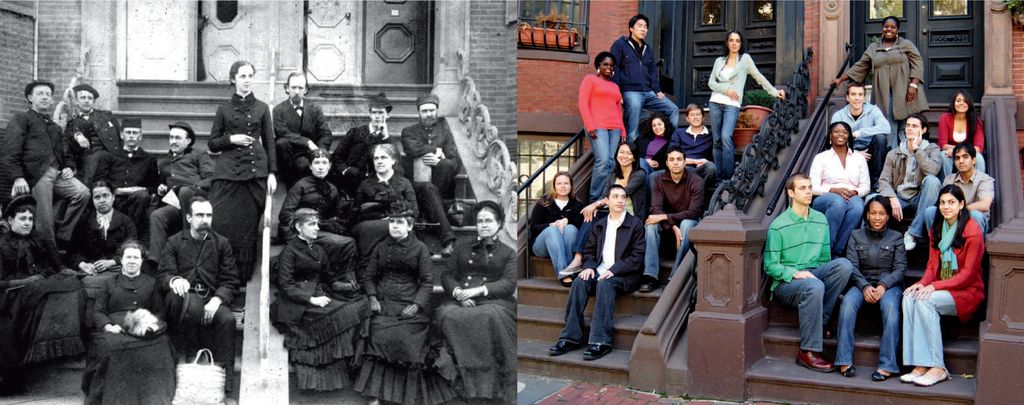 At far left, medical students sit on the steps of a neighborhood brownstone in 1885. One hundred and fifteen years later, medical students gather in 2000 to recreate the photo.
At far left, medical students sit on the steps of a neighborhood brownstone in 1885. One hundred and fifteen years later, medical students gather in 2000 to recreate the photo.
In 1848, the Boston University Chobanian & Avedisian School of Medicine began as New-England Female Medical College, the first medical school to accept women. Twenty-five years later, Boston University took over the financially troubled school and became the first co-educational medical school in the US, admitting African Americans, Native Americans, and people of Asian descent, even as other schools restricted their access to medical education.
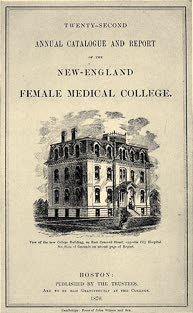 In September 2022 the school celebrated a new name in honor of former medical school dean and Boston University president Aram Chobanian, MD, and his childhood friend Edward Avedisian, a professional clarinetist and successful investor. The renaming came with a $100 million transformative gift that includes $50 million for need-based student scholarships, $25 million for endowed professorships, and $25 million for research and teaching. Today, Boston University Chobanian & Avedisian School of Medicine is a large, highly ranked institution of health sciences education and research committed to inclusive excellence as we celebrate 175 years of teaching, learning, and discovery on the front lines of our missions of health sciences, education, and research.
In September 2022 the school celebrated a new name in honor of former medical school dean and Boston University president Aram Chobanian, MD, and his childhood friend Edward Avedisian, a professional clarinetist and successful investor. The renaming came with a $100 million transformative gift that includes $50 million for need-based student scholarships, $25 million for endowed professorships, and $25 million for research and teaching. Today, Boston University Chobanian & Avedisian School of Medicine is a large, highly ranked institution of health sciences education and research committed to inclusive excellence as we celebrate 175 years of teaching, learning, and discovery on the front lines of our missions of health sciences, education, and research.
MD EDUCATION
The school currently enrolls 650 medical students who continue to experience the traditional educational components important to generations of BU medical students, including the geriatrics Home Care Program, in which participating medical students are accompanied by faculty to help care for homebound seniors. The innovative program was established in 1875. The traditional first year anatomy course continues cadaver dissections, now through simultaneous radiology imaging instruction with CT scans and ultrasound examinations of cadavers in the newly renovated anatomy lab featuring surgical lighting, virtual anatomy enhancements, and more efficient HVAC. The MD program curriculum constantly evolves to meet the needs of the medical profession of the future, using evidence based pedagogy rooted in research findings of effective adult education. The curriculum was modified last year to minimize lectures and facilitate more active, team-based learning and collaboration. Students in teams of eight are presented with problem-based learning in the new learning center surrounded by monitors, with several instructors roaming between tables. The curriculum also recognizes the increasing emphasis on medical student research experiences by competitive residency programs. The school added curriculum components on research principles, opportunities for four-year longitudinal research experiences, and an assistant dean for medical student research. Students are encouraged to seek mentors with peer-reviewed research funding in basic, translational, clinical public health, or health services research and are drawn to programs like the Homeless Health Immersion Experience, in which they conduct full clinical interviews and examinations of people experiencing homelessness and explore socioeconomic determinants of healthcare. There is a wide selection of clinical experiences available to medical students at any of 25 affiliated hospitals and medical centers, including Boston Medical Center (BMC), the primary teaching affiliate and New England’s largest safety-net hospital; St. Elizabeth’s Medical Center; three VA Healthcare System hospitals in Massachusetts and Maine; Kaiser Permanente in Northern California; and 12 affiliated community health centers.
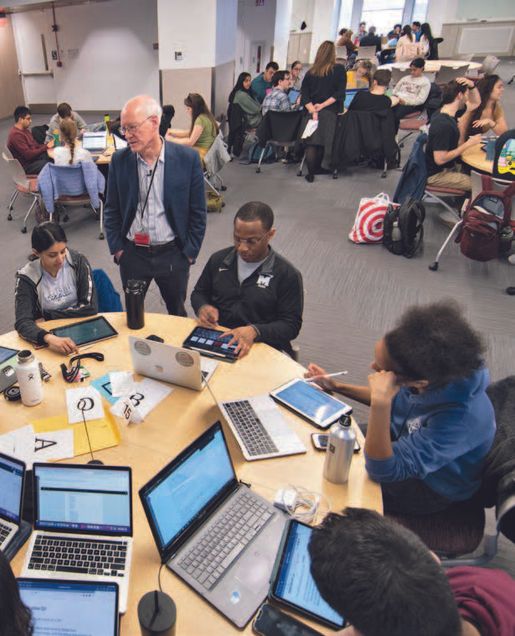 Medical education constantly evolves to serve the medical profession of the future. An archival photo of students learning in a research lab setting. At right, students in the new team-based learning center, which facilitates more active learning, problem-solving, and collaboration.
Medical education constantly evolves to serve the medical profession of the future. An archival photo of students learning in a research lab setting. At right, students in the new team-based learning center, which facilitates more active learning, problem-solving, and collaboration.
There are 261 PhD students, including 21 MD/PhD in PhD phase and 24 MD/PhD in MD phase, and 721 master’s students enrolled in 33 PhD, MD/PhD, MA/MS degree programs spanning the health sciences, behavioral medicine, clinical research, and other disciplines in Graduate Medical Sciences (GMS). Certificates also are available in several areas of study. GMS students can tailor their studies toward their unique career interests. Some of its most established programs include the MS in Medical Sciences (MAMS) program, which has helped more than 3,000 students gain admission to medical school since its founding in 1985. The Physician Assistant Program, fully accredited by the Accredited Review Commission on Education for the Physician Assistant (ARCPA), has enjoyed a 100% pass rate since 2016 on the National Commission on Certification of Physician Assistants Physician Assistant National Certification Exam. Other popular degrees include the forensics programs, the well-known Anatomy Vesalius Program, and Mental Counseling & Behavioral Medicine, the only accredited program of its kind at a medical school. The broad and interdisciplinary PhD programs teach trainees transferable skills for wide-ranging careers. The umbrella Program in Biomedical Sciences offers first-year students the opportunity to explore a variety of research areas along with a core curriculum to determine the focus of their PhD. The Graduate Program for Neuroscience unites graduate training faculty on the Charles River and Medical campuses, while the Anatomy & Neurobiology, Behavioral Neuroscience, and Biomolecular Pharmacology degrees provide students with the expertise they need to be leaders in their fields.
RESEARCH
We’ve also invested in our research mission, including the National Emerging Infectious Diseases Laboratories (NEIDL), the Framingham Heart Study, the Black Women’s Health Study, and the Alzheimer’s Disease, Chronic Traumatic Encephalopathy, Cancer, and Regenerative Medicine centers. A unique research facility, the NEIDL opened in 2017, one of only two university-affiliated biosafety level 4 National Biocontainment Laboratories constructed in the US. The infrastructure is funded by a National Institute of Allergy and Infectious Diseases grant to safely study the most infectious and deadly diseases. During the pandemic, the NEIDL and many other research labs and clinical departments focused on SARS-COV-2, studying how the immune system is alerted to fight (and eventually clear) the virus, as well as on the virus’s clinical complications and treatments. The role of science in informing the public and policy makers led to the creation of the Center for Emerging Infectious Diseases Policy & Research (CEID), which pairs expertise in diseases—such as COVID-19, Zika, and Ebola—with policy research to advise governments, communities, and academic institutions on how to prepare for and respond to epidemics and pandemics. To accomplish our education and research missions, we are committed to recruitment and development of outstanding faculty and to state-of-the-art education and research facilities.
“We are positioning the Boston University Chobanian & Avedisian School of Medicine to become the place students and faculty want to be. The best place to learn, teach, and discover.” Dean Antman
The school continues to foster scholarship and faculty development through a variety of professorships and funding opportunities including core facilities, pilot grants, assistant professorships, and multiple faculty development programs.
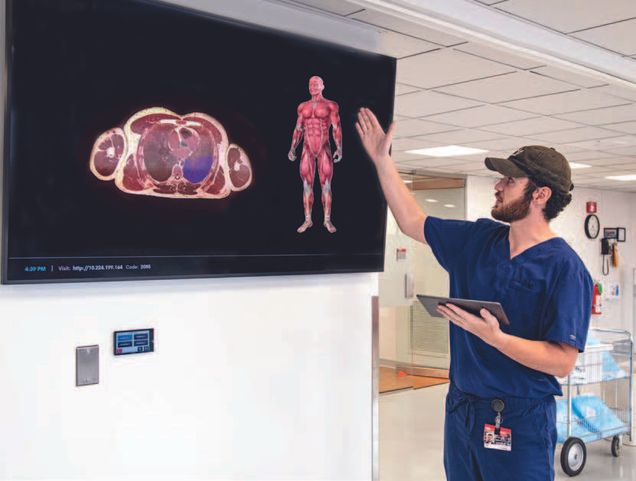 Tyler Capen, a Gross Anatomy Lab research assistant, demonstrates the new VH Dissector that displays 3D and cross-sectional views of anatomical structures.
Tyler Capen, a Gross Anatomy Lab research assistant, demonstrates the new VH Dissector that displays 3D and cross-sectional views of anatomical structures.
STATE-OF-THE-ART FACILITIES
Over the years, the school has transformed and expanded its physical footprint (see sidebar). Key projects include the 2012 opening of a $40 million on-campus Medical Student Residence, the addition of the Godley Digital Media Studio, recent renovations to the Alumni Medical Library, Gross Anatomy Lab, and the new Learning Center on the fourth floor of the Instructional Building. “We are positioning the Boston University Chobanian & Avedisian School of Medicine to become the place students and faculty want to be. The best place to learn, teach, and discover,” Dean Antman said. “We celebrate the contributions of our faculty, staff, students, alumni, parents, and friends as we celebrate this 175-year milestone and build for the future.”
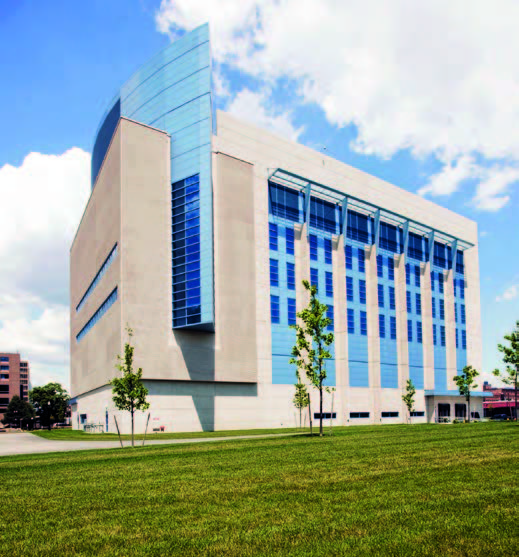 The National Emerging Infections Diseases Laboratories
The National Emerging Infections Diseases Laboratories
View all posts